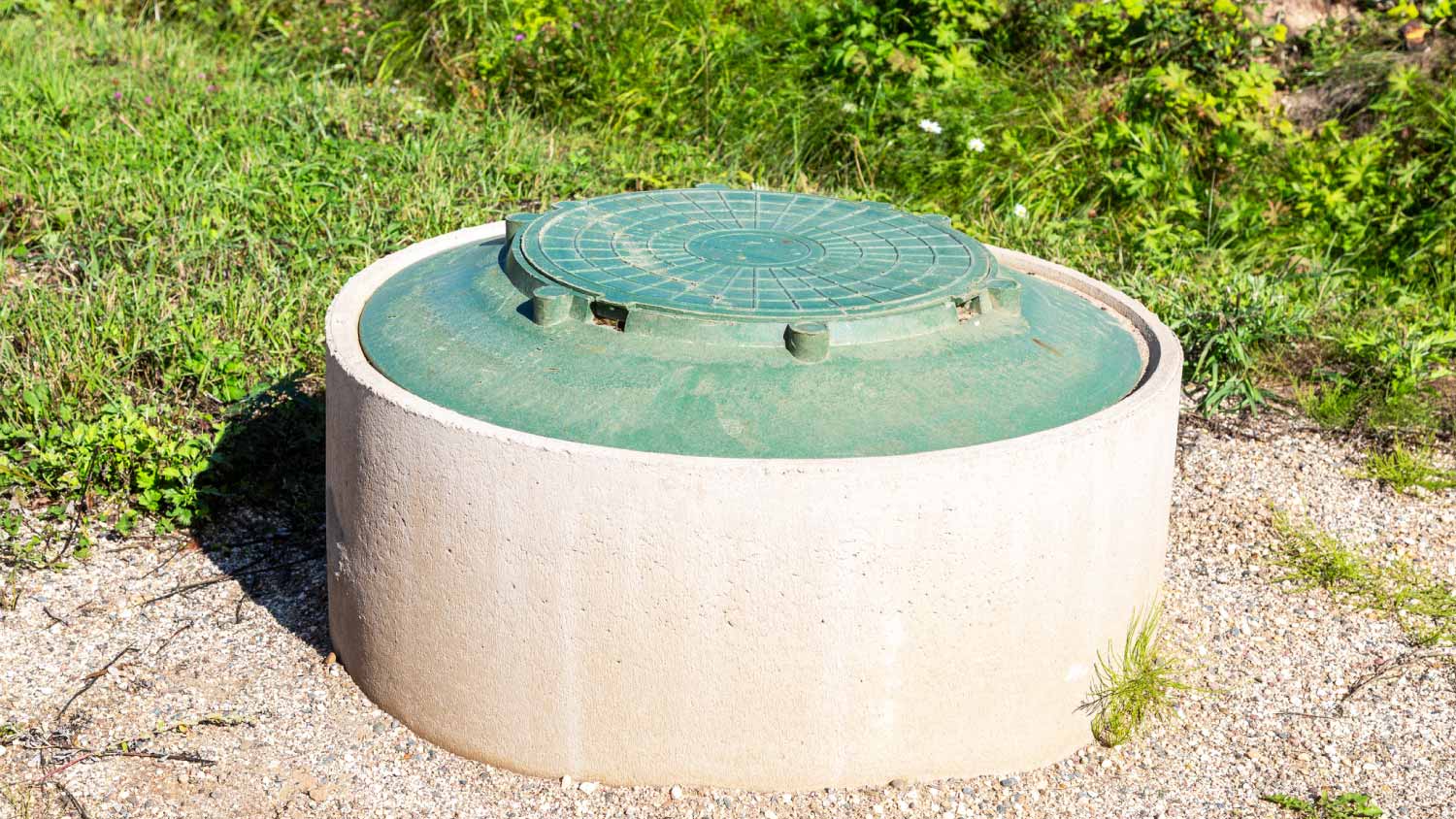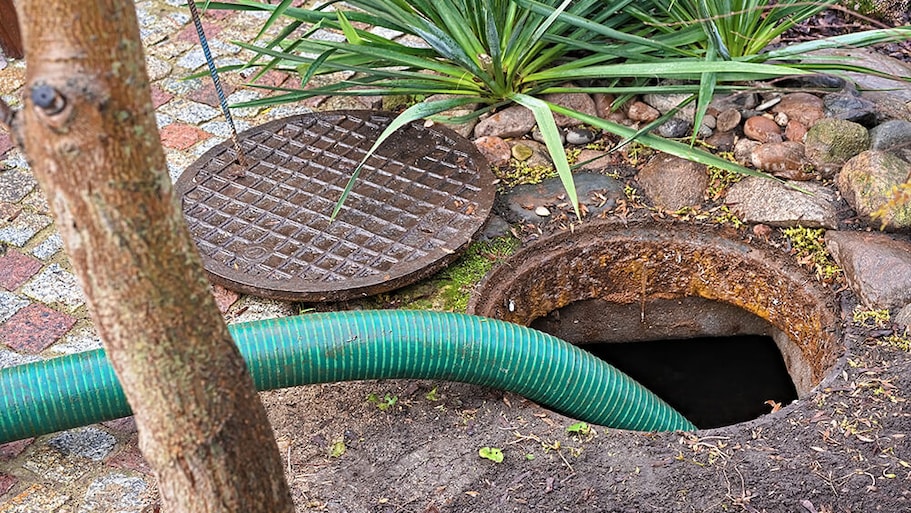How to Test a Septic Drain Field’s Effectiveness
A clogged drain field stinks—literally


A well-functioning septic drain field properly filters and disperses wastewater from your home. Whether you’re troubleshooting a potential issue or maintaining your system, understanding how to locate, test, and care for your drain field can help prevent costly repairs. Learn how to test a septic drain field in this handy guide.
Why Do I Have to Test a Septic Drain Field?
There are two crucial reasons to test a septic drain field: to ensure your septic system is functioning properly and to prevent environmental contamination. Drain fields can become clogged with sludge, grease, or buildup, causing slow drainage, backups, or complete system failure. Regular testing detects early signs of failure, allowing for timely maintenance or repairs before costly issues arise.
A failing drain field can cause wastewater to surface in your yard or seep into groundwater, posing serious health risks and environmental damage. Tests help homeowners verify that the drain field is filtering and dispersing wastewater effectively. This proactive test extends the septic system's lifespan and helps avoid expensive repairs and cleanup due to contamination.
When to Test a Septic Drain Field
The dry season, like late summer or early fall, is the best time to test your septic drain field. Groundwater levels are lower during this time of year and won’t interfere with results. You should also test if you notice warning signs like slow drains, gurgling pipes, sewage odors, soggy or unusually green patches in your yard, or backups in your home.
If you’ve recently had heavy rainfall or flooding, it’s a good idea to check for saturation issues. For any type of septic system that is over five years old or hasn’t been inspected in a while, scheduling a test can help catch problems early.
How to Test a Septic Drain Field

You can use several methods to test your septic drain field. Each one identifies issues like poor drainage, leaks, or soil saturation. Below, we’ll cover three common tests—percolation, dye, and soil probe—to help you determine the health of your system.
Use a Dye Test
A dye test checks for leaks or improper drainage in a septic system. The test involves adding a non-toxic, brightly colored dye into a toilet or drain and then flushing the system with water. If the dye appears on the ground above the drain field or near nearby water sources, it could indicate a system failure, such as a clog or oversaturation. This test is used to detect leaks that may be contaminating groundwater or causing sewage to surface in your yard.
Use a Percolation Test
A percolation test, or perc test, measures how quickly water drains through the soil to see if the drain field is absorbing wastewater properly. You'll dig small holes into the drain field, fill them with water, and time how long it takes for the water to soak into the soil. Slow drainage indicates soil compaction, clogging, or poor absorption. Perc tests are required for new septic system installations but can also be useful for diagnosing existing drain field issues.
Perform a Soil Probe Test
A soil probe test assesses the drain field's moisture levels by inserting a metal probe or auger into the soil. If there's excessive moisture, strong sewage odors, or black sludge, the drain field is oversaturated or failing. This method helps clogged or compacted areas where wastewater isn’t filtering properly. Adding this maintenance task to your list helps catch early signs of trouble.

Maintaining a Septic Drain Field
Proper maintenance of your septic drain field keeps your entire septic system functioning efficiently and avoids costly repairs. Here are some key tips to help extend its lifespan:
Conserve Water: Excessive water use can overload the drain field. Spread out laundry loads, fix leaks promptly, and use water-efficient appliances.
Avoid Heavy Traffic: Keep vehicles, heavy equipment, and structures off the drain field to prevent soil compaction and pipe damage.
Watch What You Flush: Only flush toilet paper and human waste. Avoid flushing grease, wipes, chemicals, or anything that can clog the system.
Divert Rainwater: Ensure gutters, downspouts, and surface water drain away from the drain field to prevent oversaturation.
Limit Landscaping: Plant only grass or shallow-rooted plants over the drain field to prevent root intrusion into pipes.
Pump the Septic Tank Regularly: Pumping every three to five years prevents solids from reaching the drain field and causing blockages.
Monitor for Warning Signs: Look for slow drains, foul odors, or soggy areas in the yard.
Baby wipes and other “flushable” bathroom wipes are often not able to properly break down in your septic system. Avoid flushing any wipes down the toilet, even if they say “flushable.”
DIY Drain Field Testing vs. Hiring a Pro
Some septic drain field tests, like the soil probe test or a basic dye test, can be done as DIY projects. These simple methods help monitor the system and catch early signs of trouble. However, they won't always give you a complete diagnosis, and improper testing techniques can get you inaccurate results.
Percolation tests provide more accurate results but are best handled by a local septic specialist. These pros understand soil conditions, drainage rates, and septic system design, and their assessment provides accurate results so they can recommend the best solution. If your septic problems are ongoing, it's time to consult a septic tank pro to inspect your septic system to avoid costly mistakes and ensure it’s working properly.
Frequently Asked Questions
Start by finding the septic tank, marked by an access lid near your home. From there, the drain field extends outward in a series of trenches. Look for greener, lusher grass, as drain fields promote plant growth due to moisture and fertilizer. You can also check property records, use a soil probe to detect damp soil, or hire a septic professional with ground-penetrating radar equipment to map the drain field’s location.
Depending on soil type, local regulations, and system design, septic drain fields are buried 18 to 36 inches below the surface. The depth ensures proper wastewater filtration while allowing aerobic bacteria to break down contaminants. In areas with high groundwater levels or rocky soil, drain fields may be shallower or require alternative solutions like raised bed systems.
Adding a thin layer of dirt over a septic drain field is fine, especially if soil erosion has occurred. However, adding too much dirt can compact the soil, reducing the drain field’s ability to absorb and filter wastewater properly. Avoid using heavy clay soil, as it can prevent proper drainage. Instead, use a light layer of topsoil and plant grass to help with soil stability.
Septic drain fields should be at least 10 feet from the property line, though exact requirements vary by location. Some areas may require further distances, such as 25 feet or more, depending on soil conditions and local health regulations. This extension ensures proper wastewater absorption and prevents contamination of neighboring homes.
















